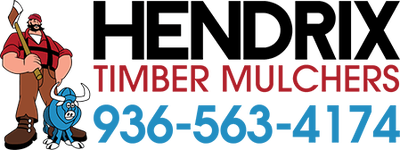
The Importance of Proper Maintenance and Service for Your Diamond Mowers Mulcher, as Advised by Local Dealers
Forestry mulching is a land-clearing method that has revolutionized the way we manage vegetation, clear land, and handle invasive species. Using a diversity of heavy-duty equipment, this process quickly turns trees, bushes, and other organic material into mulch, right on site. The efficiency of forestry mulching equipment has made it an invaluable tool for landowners, farmers, and construction professionals.
However, as with any mechanical equipment, forestry mulchers face wear and tear with regular use. To ensure optimal performance and longevity of the equipment, it’s crucial to understand the common wear parts, identify signs of wear, and replace these components promptly.
Recognizing When to Replace Wear Parts
Here are some tell-tale signs that parts in your forestry mulching equipment might need attention:
- Decreased Performance: If your machine isn’t operating at its usual capacity or is taking longer to mulch the same amount of material, wear and tear on parts might be the cause.
- Unusual Vibrations: Excessive or new vibrations can indicate that cutting tools or the holder systems are damaged or unbalanced.
- Visible Wear: Regular inspections will reveal wear such as chips, bends, or dullness on the cutting teeth and blades.
- Increased Fuel Consumption: When your machine has to work harder due to worn parts, it will consume more fuel, which can be a sign that something needs replacing.
Key Wear and Tear Parts
Forestry mulching equipment has several components that are more susceptible to wear and tear due to their direct contact with soil, rocks, and wood. Some of these components include:
- Cutting Teeth/Blades: These parts come into direct contact with the material being mulched and are therefore prone to dulling and damage.
- Mulcher Belts: These need to be sturdy and in good shape to transmit power efficiently from the engine to the mulching head.
- Skid Shoes/Plates: These parts protect the mulcher from damage, wear down with use, and eventually need replacement.
- Drive Shafts and Bearings: These components are subjected to high stress and over time can fail without proper maintenance and replacement.
- Hydraulic Hoses: High-pressure lines can develop leaks due to abrasions or punctures from debris.
When to Replace Wear Parts
- Cutting Teeth/Blades: Should be inspected after every use and replaced when they become dull or show significant damage.
- Mulcher Belts: Inspect for cracks and replace every couple of hundred hours of operation or at any sign of wear to prevent unexpected breakdowns.
- Skid Shoes/Plates: Replace when they thin to the point that they can no longer effectively protect the mulcher body.
- Drive Shafts and Bearings: Generally, replace bearings every 500-1000 hours and inspect drive shafts regularly for wear.
- Hydraulic Hoses: The lifespan varies greatly but generally inspect frequently and replace at signs of abrasion or if leaks are detected.
How to Replace Wear Parts
Replacement of wear parts should always be done in accordance with the manufacturer’s specifications. Below are general guidelines for replacing the most common wear parts:
- Cutting Teeth/Blades: Turn off the machine and ensure it is stable. Use the recommended tools to remove old teeth/blades and replace them with new ones, making sure they are properly secured.
- Mulcher Belts: Depressurize the system before working on the belts. Loosen the tensioner to remove the old belt and place the new one on. Ensure the tension is correctly set after replacing the belt.
- Skid Shoes/Plates: Typically bolted on, they can be removed with basic tools. Ensure that replacements are properly aligned and securely fastened.
- Drive Shafts and Bearings: Disassembly may require specialized tools or knowledge. Be sure to clean any debris and apply proper lubrication during reassembly.
- Hydraulic Hoses: Replace hoses by first relieving hydraulic pressure, then removing the old hose and fitting the new one ensuring all connections are tight and secure.
Final Thoughts
Regular maintenance and timely replacement of wearable parts in forestry mulching equipment is a key factor in ensuring operational efficiency and extending the life of the machine. Hendrix Timber Mulchers understands the importance of maintaining high-quality gear and offers a range of replacement parts and services to keep your equipment in peak condition. By recognizing the signs of wear and knowing when and how to replace parts, you’ll minimize downtime, save on repair costs, and get the most out of your investment.
